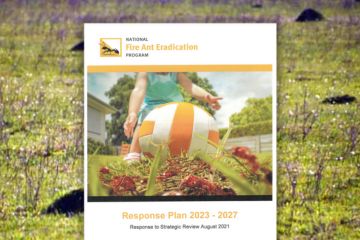Tasmania needs stronger action on invasive species.
Tasmania is a remarkable island state with native animals and plants found nowhere else on earth, some of the most spectacular protected areas in Australia, and highly valued agriculture, forestry, and tourism sectors.
But the future health of our state’s environment, agriculture, and economy is under threat from highly damaging invasive species.
Tasmania is in an extinction crisis. Having evolved in isolation from the rest of the world, our mega-diverse island is highly susceptible to the impact of invasive animals, weeds, and pathogens that can kill, outcompete, or overwhelm native wildlife and ecosystems.
- Weeds like Spanish heath and gorse smother our native plants
- Feral and roaming pet cats hunt and kill our birds and small mammals.
- Trees are stripped bare, streams eroded and new vegetation is trampled by feral deer, which are spreading at an alarming rate.
- New threats like fire ants could cause a wave of extinctions if they make it here.
Invasive species also reduce farming production, prevent natural regeneration of bushland, and are an increasing threat to human lives on our roads. They cost Tasmania hundreds of millions of dollars each year in lost agricultural production and increased insurance and management costs.
We face a crisis and current measures and resources in Tasmania are insufficient to halt and mitigate the impact of established invasive species and prevent the arrival and spread of new invasive species.
The good news is that, as an island, Tasmania also has a natural advantage. Islands offer a massive opportunity for eradicating and preventing the reintroduction of invasive animals, weeds, and pathogens. This can be a winning strategy to future-proof biodiversity, revive world heritage areas and national parks and ensure our agriculture is a clean, green thriving sector.
With investment and commitment, Tasmania could become a wildlife revival success story, free of the worst invasive species. That’s why we are calling on the next Tasmanian government to protect our environment, economy, and community from invasive species.








